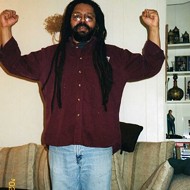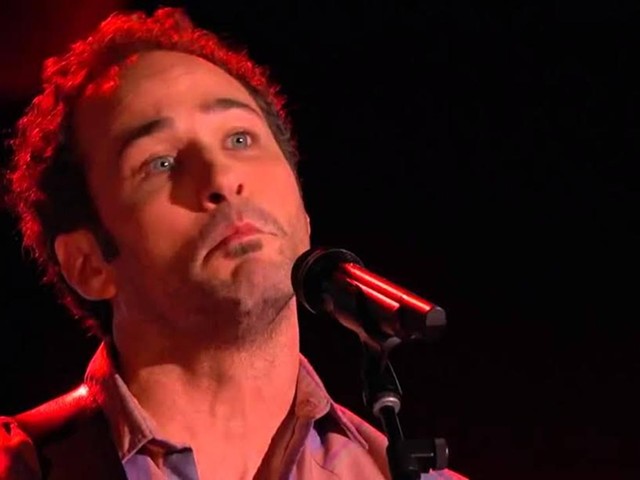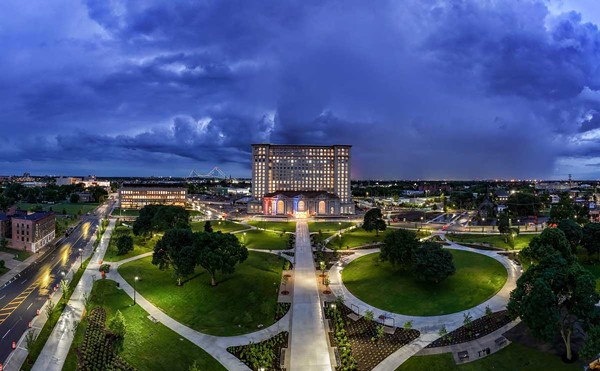The killing of 19-year-old Terrance Kellom by U.S. Immigration and Customs Enforcement Officer Mitchell Quinn last week came right on the heels of the death of Freddie Gray, who was fatally injured while in custody of Baltimore police the week before. Gray's death came on the heels of the murder of Walter Scott by a policeman in South Carolina. Scott's came on the heels of ... well, you get the idea.
When a coalition of community groups held a demonstration last Tuesday to call attention to Kellom's killing, so many members of Detroit's major media showed up for what turned into a press conference for the first 45 minutes. There had to be 15 to 20 people from various media outlets there — including five vans on-site from local affiliates of the major television networks. This was unusual. The Detroit Coalition Against Police Brutality has demonstrations similar to these fairly often whenever there are incidents of questionable police violence against citizens, and the media usually doesn't show up in droves.
The difference last week was that Baltimore had erupted in violence and civil disobedience around Gray's death — the night before newscasts treated us to images of fire and destruction — and Detroit newscasts had a hot peg for the Kellom demonstration. What if this crowd erupted in some sort of violence at Evergreen Road and West Chicago where they gathered?
A lot of people are wondering that. Last summer it was Ferguson, Missouri. Then it was in Baltimore. Could Detroit be next?
That was on the minds of some at the Kellom demonstration. One woman who spoke said that Detroit is on a comeback and she didn't want to see anything run that off track.
With a population of 622,000, Baltimore was once cited across the nation as the comeback city. It has a redeveloped core called the Inner Harbor with a tourist- and commerce-friendly area featuring major national chain stores and restaurants. Across the harbor, which is accessible by water taxi, upscale condos line the neat streets. Camden Yards, where the Orioles played to an empty stadium last week, is within walking distance.
Baltimore's touted renaissance was driven in part by a public-private partnership fueled with millions of foundation dollars in some areas. Yet somehow that shiny Baltimore-by-the-Bay vibe never penetrated to Sandtown, the neighborhood where Freddie Gray lived. That Baltimore was the one captured for national audiences on HBO's The Wire most recently, but more realistically earlier in a 2000 miniseries called The Corner. That series was developed from a book written by a journalist who spent a year chronicling the lives of poverty-stricken families and open air drug markets on Baltimore's west side.
Does the description of Baltimore, a comeback city, remind you of Detroit? We have Midtown as our fancy upscale redeveloped inner core, with the Ilitch organization's new hockey arena and entertainment district soon to come next door. Much of this is within walking distance of Comerica Park and Ford Field. Millions of foundation dollars roll across the city in public-private partnerships.
As those areas develop, the poor who formerly lived downtown are being pushed off to other areas of Detroit, yet there is little to address the ingrained, multigenerational poverty they suffer from. Interestingly enough, if you consider poverty and unemployment as conditions that lead to civil unrest, things don't look good for the Motor City. According to U.S. Census Bureau numbers, Baltimore has a poverty rate of 23.8 percent and Detroit's is 39 percent; Baltimore's unemployment rate is 8 percent while Detroit's is 12 percent.
So far Detroit has been calm. There is no phone cam video of police pouncing on Kellom running on a loop on news shows to rile folks up. Kellom's case is a straight up one of "bam, bam you're dead." Well, according to some reports, it was actually 10 bullets shot at Kellom that made him dead. The ICE agent claims that Kellom carried a hammer, although Kellom's father says that's not true.
One of the things that troubles me is that the agent reportedly fired as he was retreating. It seems that if Hammertime was advancing on ICE ICE Baby, all the agent had to do was keep retreating. There were other agents on the scene. One man, even if he had a hammer, was not a threat to them. All he had to do was back off and let Kellom deal with the fact that he was surrounded by cops. I'm not sure backing off is in the police training manual, or maybe they just skip that chapter.
My finger may not be on the pulse of the city, but right now I don't think Detroit is about to erupt. One reason is Wayne County Prosecutor Kym Worthy. Earlier this year she charged former Inkster Police Officer William Melendez for assaulting Floyd Dent. Last year her office got a conviction against Dearborn Heights' Theodore Wafer for killing Renisha McBride. It's not that no crime goes unpunished around here, but people have the sense that Worthy will seek justice. There is no pent up oh-no-not-again pressure ready to boil over.
That could change quickly if something else happens that people deem unjust.
During the demonstration on Evergreen Road, someone in the crowd yelled "No justice, no peace." One of the speakers there tried to amend the chant to "Justice with peace." But when the march took off along West Chicago, the chant, led by young men, was "No justice, no peace."
As I finish up this column, news broke that the six police officers involved in Gray's death had been charged with various degrees of murder and assault. So maybe there will be some justice.
However, in Baltimore, it did not come with peace.
Larry Gabriel writes the Stir It Up and Higher Ground columns for the Detroit Metro Times and is editor of The American Cultivator.






